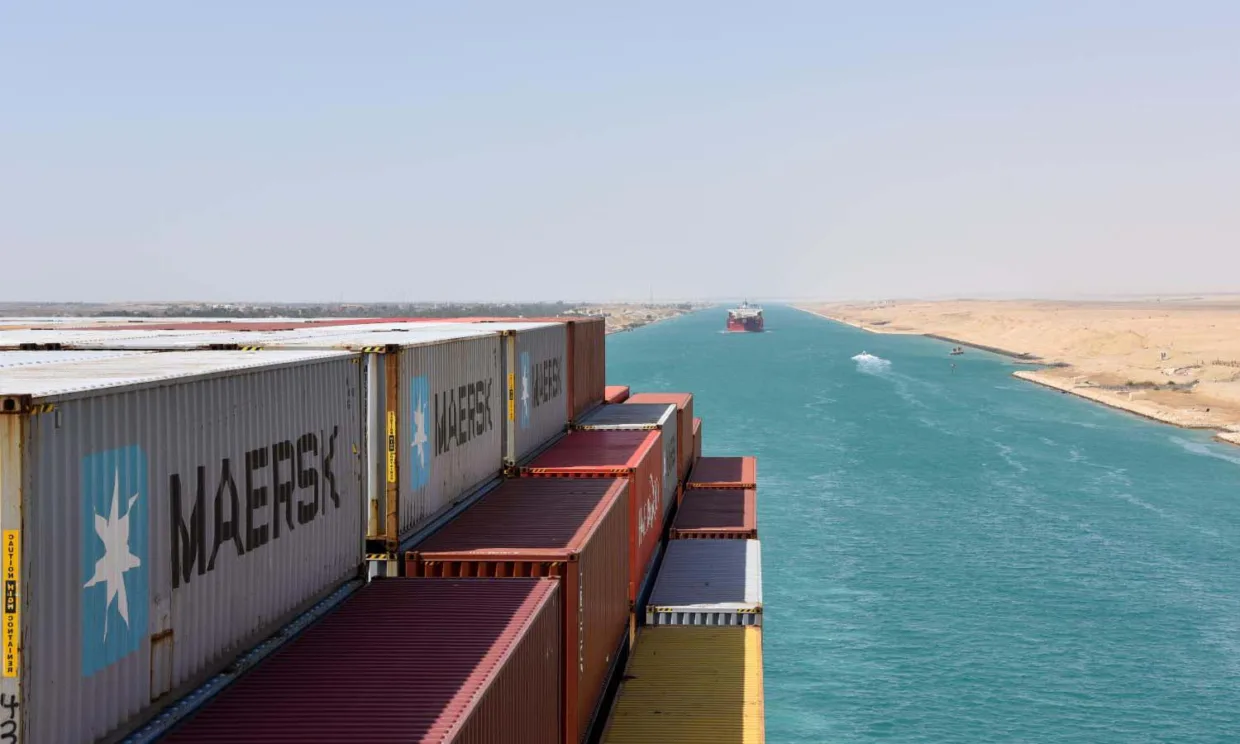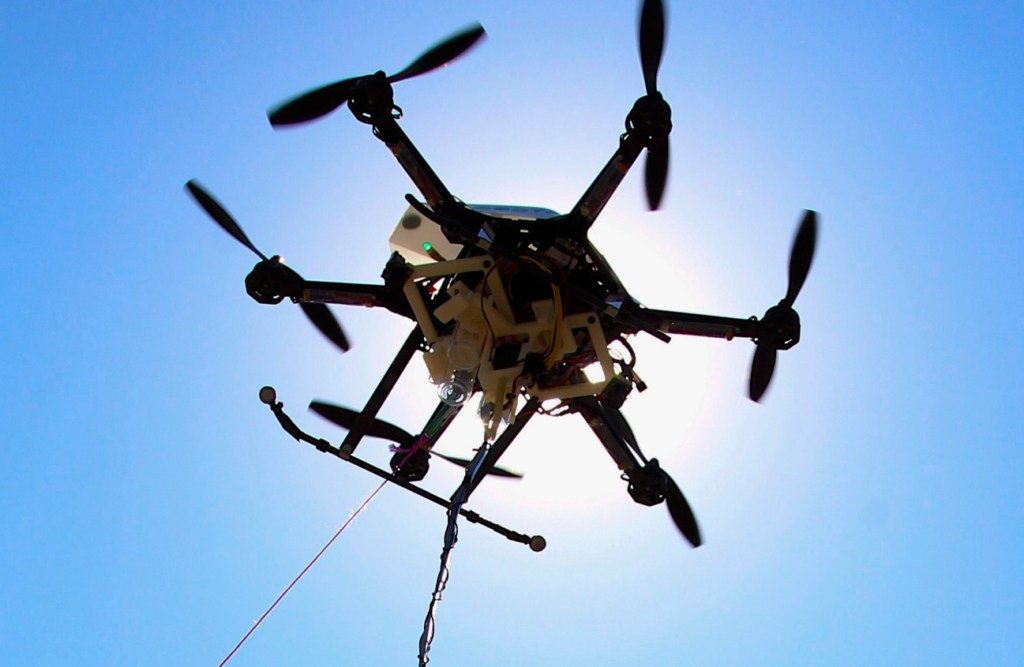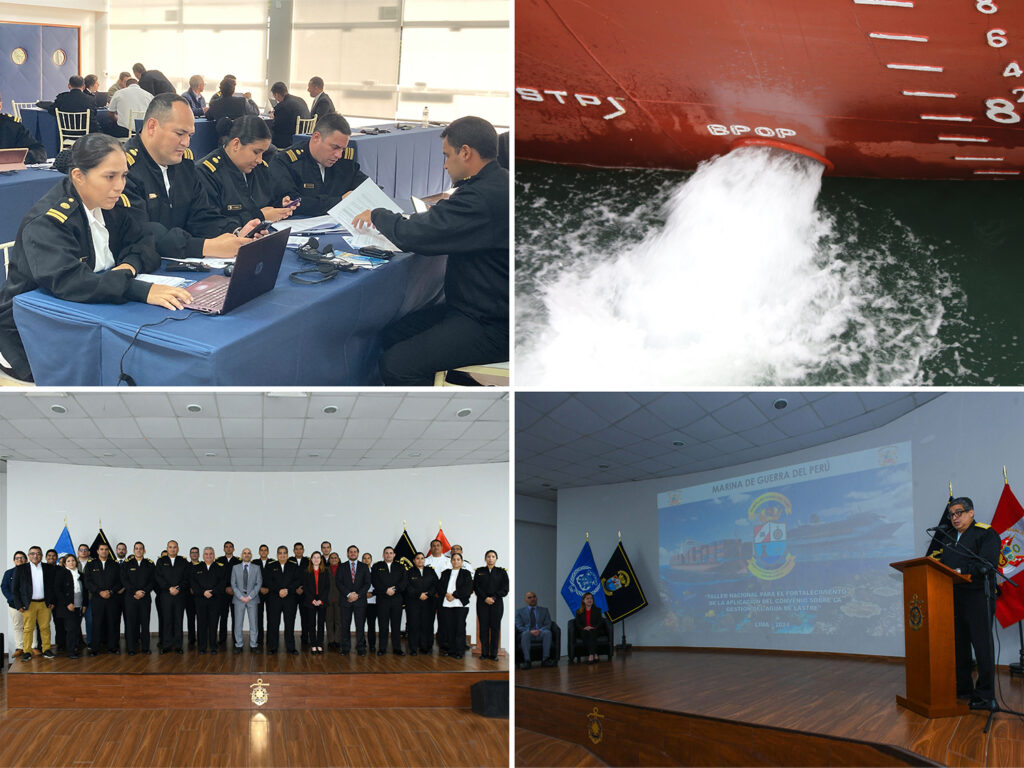Report : Magdy Sadek
What does it mean with Aerial drones which, are often called uncrewed aerial systems (UAS),?! It is a rapidly increasing aviation technology as you know with widespread global use in multiple domains.
Many use cases of aerial drones for the civilian maritime industry, including but not limited to
- Supporting research and rescue missions in maritime emergencies through monitoring emissions and taking air quality readings in busy shipping lanes and near ports
- Recording videos & capturing images of a vessel for media, and advertising purposes
- Surveying & inspection assets – for example, inspecting the hull or mast of a ship, or port infrastructure, as part of an asset maintenance program, reducing the need for people to access hazardous areas
- Delivery of supplies as part of logistics for shipping operations
However, their accidental or deliberate misuse can present threats to commercial maritime vessels.
Aerial drones have been used maliciously in events that have led to disruption and harm. An extreme example of this is using military-grade or weaponized commercial drones, as seen in the attacks on the MV Mercer Street and the Pacific Zircon vessels.
If aerial drones can be used to present threats to commercial maritime vessels, there are a range of mitigations available.
The surge in drone-related incidents targeting maritime assets has unveiled a new chapter within the maritime security space
The incidents reported in 2022 and 2023, and even 2024 serve as potent examples, highlighting the severity of these of these attacks
However, these need to be proportionate to the anticipated threat and should be fully assessed to determine if they will provide a net positive benefit to a maritime organization, as each mitigation option carries strengths and weaknesses.

Threats and response options
Threats and response options for other types of drone, such as amphibious drones, surface or subsurface remotely controlled autonomous vehicles, swarms of aerial drones (for example, 2 or more drones flying in a coordinated manner by a single operator), and large-scale, military aerial drones such as the Thales Watchkeeper WK450, Baykar Bayraktar TB2, and General Atomics MQ-9 Reaper, are out of scope for this guidance.
Threats from, and response to, military anti-ship missile systems are also out of scope.
The current conflict in the Red Sea region, as well as drone attacks, poses a threat to global energy security.
Al-Houthi forces in Yemen have increasingly used drones and ballistic missiles against civilian vessels, posing a new danger to the Red Sea’s energy infrastructure and Movement of Global trading and freedom of navigation
The unpredictability associated with drone attacks poses a considerable challenge, making it hard for actors in maritime systems like vessels to pre-empt or mitigate such threats effectively.

Al-Houthi/Saudi Arabia Conflict
Bloody Conflict between –Houthi group and Saudi Arabia
You remember that In September 2018, Houthi group rebels attacked Saudi Arabian oil refineries and energy infrastructure using 10 long-range UAV-X drones. A Saudi oil tanker was attacked by the Houthi group in international waters west of the port of Hodeida, sustaining a minor, ineffective injury.
They also bombed the dry port, in addition to attacking another oil tanker in the Red Sea and then the Aramco refinery.
Owing of these strikes, the kingdom suffers losses in the economy, regional security, and global energy markets.
Houthi group attacked Saudi energy sources and facilities either using off-the-shelf commercial consumer drones, ballistic missiles, or armed military-grade UAVs as refineries, processing plants, pipelines, and storage tanks were hit impacting Saudi Arabia’s oil production and exports, shutting down facilities, and influencing global oil prices.
The Kingdom of Saudi Arabia took measures to prevent and fortify its electricity generation and distribution infrastructure.
Saudi Arabia’s response included the subsequent use of air defense systems to intercept drones and missiles, attacking al-Houthi targets in Yemen, and collaborating with international partners
On May 14, 2019, the Houthis announced that they had carried out a “major military operation” with drones on Saudi oil facilities, which led to stopping the pumping of oil in one of the pipelines connecting the east and west of the Kingdom.
The Ukraine-Russia war is the first real “drone” battle in the world!!
In October 2022, the Russian fleet in the Black Sea near Sevastopol was attacked by 16 drones, and a video clip showed that the ships were unable to avoid the attack.
While Russia has used drones to launch assaults against Ukrainian energy sources ever since the conflict between Russia and Ukraine began with goal of these strikes is to weaken not only the Ukrainian economy but also the morale of its people.

Red Sea Conflict:
The current conflict crisis in the Red Sea remains the greatest test and danger the current conflict in the Red Sea region, as well as drone attacks, poses a threat to global energy security.
The end of 2023 is marked by major disruptions to global maritime trade flows as ships entering the Gulf of Aden and sailing through the Red Sea and Suez Canal continue to face attacks by the Houthi group
Security threats in the Red Sea have caused global trade and transport repercussions and the signification of ship arrivals across the Asia-Europe and Asia-Atlantic trade lane have diverted their initial trajectory and started sailing around Africa Cape of Good Hope Al-Houthi groups have increasingly used drones and ballistic missiles against this civilian and commercial vessels
The Suez Canal is a global strategic waterway that enables the crossing of 10% of global seaborne trade by volume and 22% of containerized trade flows the red sea shipping crisis is putting considerable strain on international trade, regional stability, and economic recovery against a backdrop of inflationary pressure and macroeconomic uncertainty
The maritime energy trade profoundly affects the security of energy supplies and consumers. Significant interference with navigational freedom would have indirect but far-reaching repercussions such as reducing the rate of progress in combating climate change.
Freedom of navigation is crucial to keep global energy markets safe and efficient. The cost of shipping doubled on the Shanghai – Rotterdam route and rose by 350% on the Shanghai – Genoa route
J.P.Morgan Research emphasizes a potential uptick in global core goods inflation by 0,7 % points alongside a 0,3% point increase in overall core inflation during the first half of 2-24 in addition to the disrupted trade, the risk of inflation , the diversion of shipping via the Cape of Good Hope has a significant impact on African Ports

Advice Ben Scott
Ben Scott, Director at SyOps Solutions explains, ‘shooting drones out of the sky’ is a distant prospect.
Even removing drones from a threat perimeter on land or around a stationary structure (such as an offshore platform) takes immense precision and skill, backed up by specialist software / hardware C2 solutions. Aboard a moving vessel,
it is almost impossible: at 10km range, a responder on deck has about 80 seconds to react. Most counter-drone technology offered on the market is extremely unlikely to offer a credible deterrent.
The best defense is increased detection capability, requiring 3D MIMO radar (systems in the range of £100k).
Within territorial waters a vessel security team can still detect, track, and identify incoming objects – and protect the crew by placing them in a safe haven above the waterline, ideally a citadel in the centre of the vessel superstructure.




